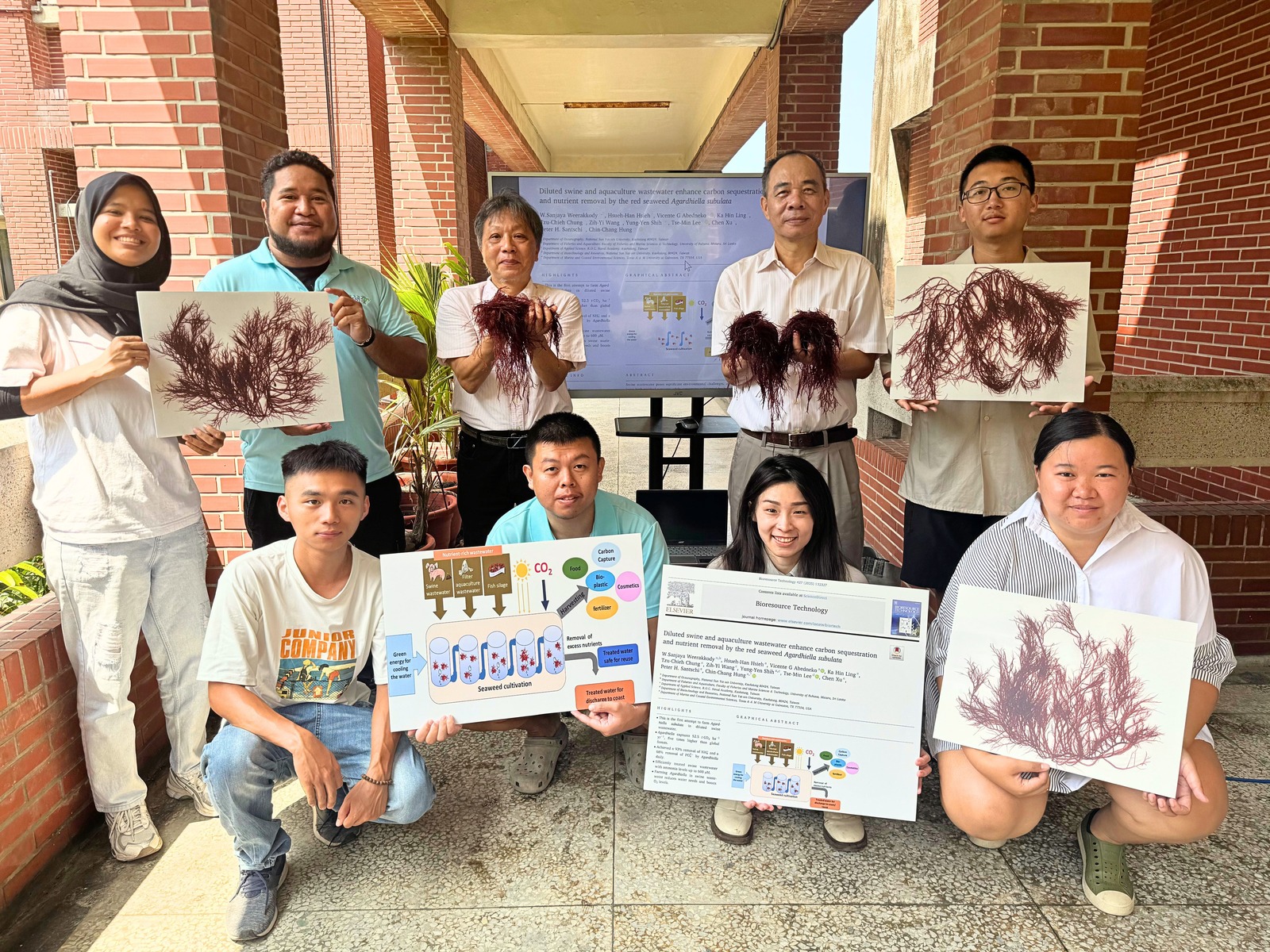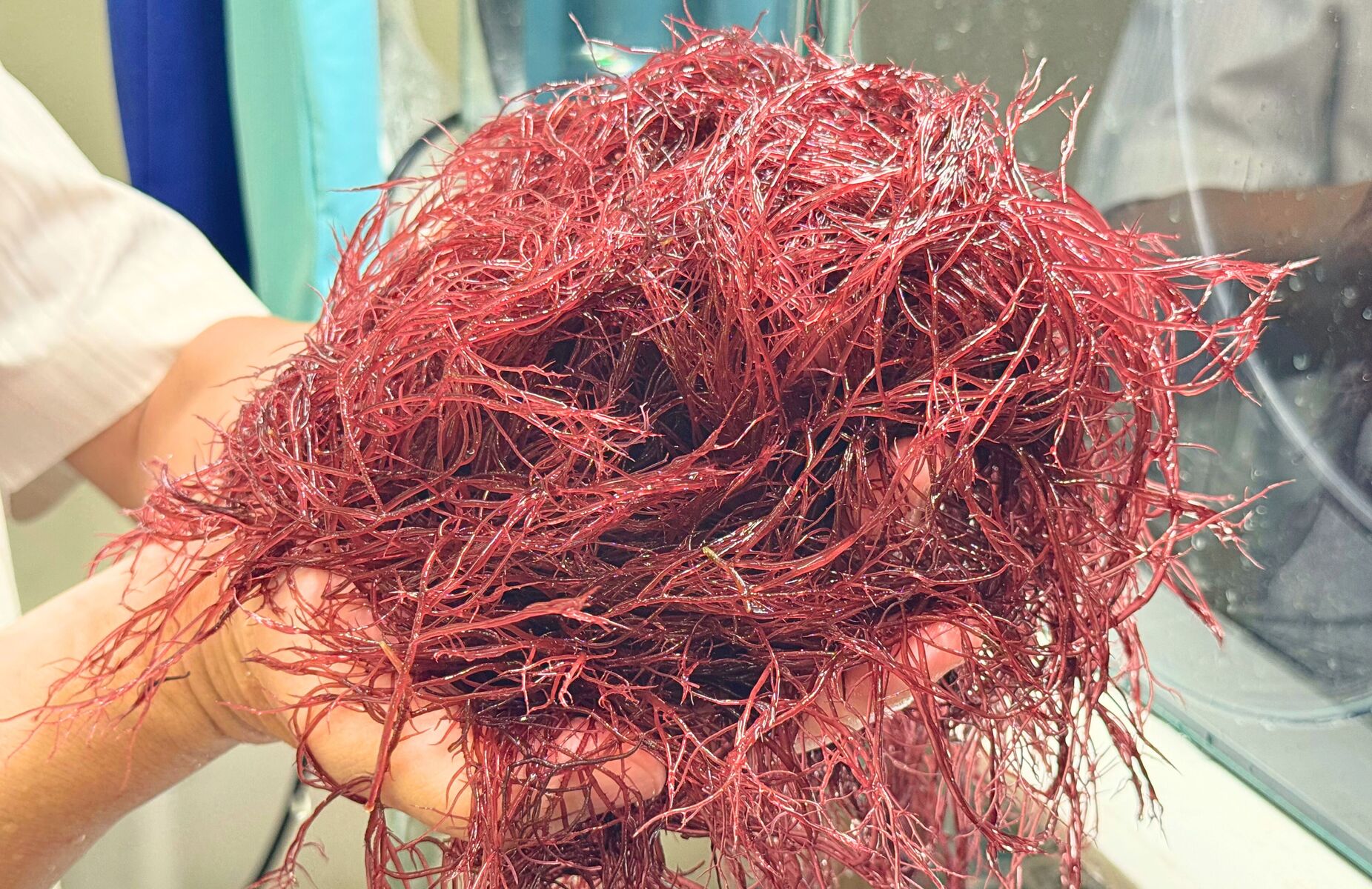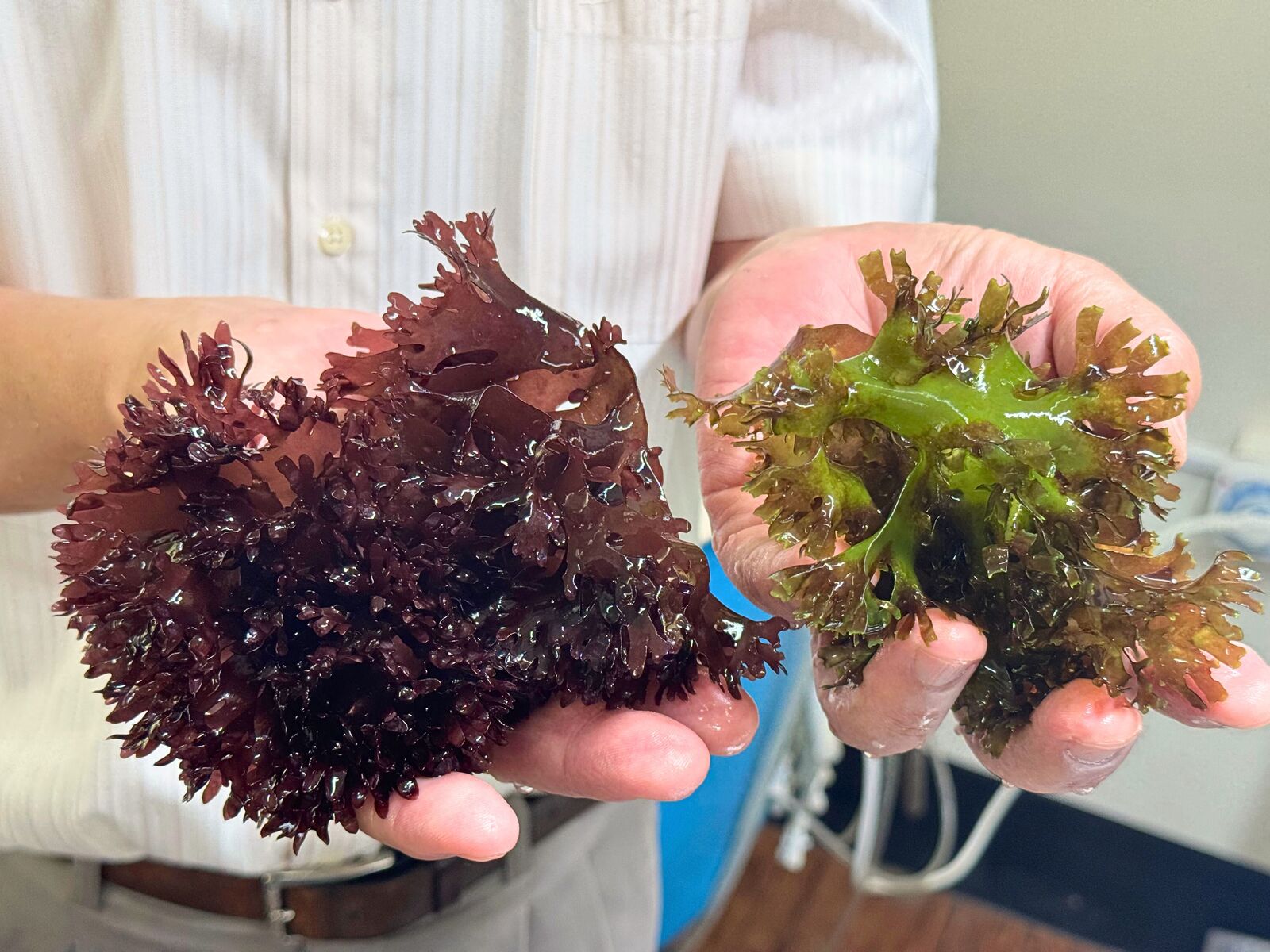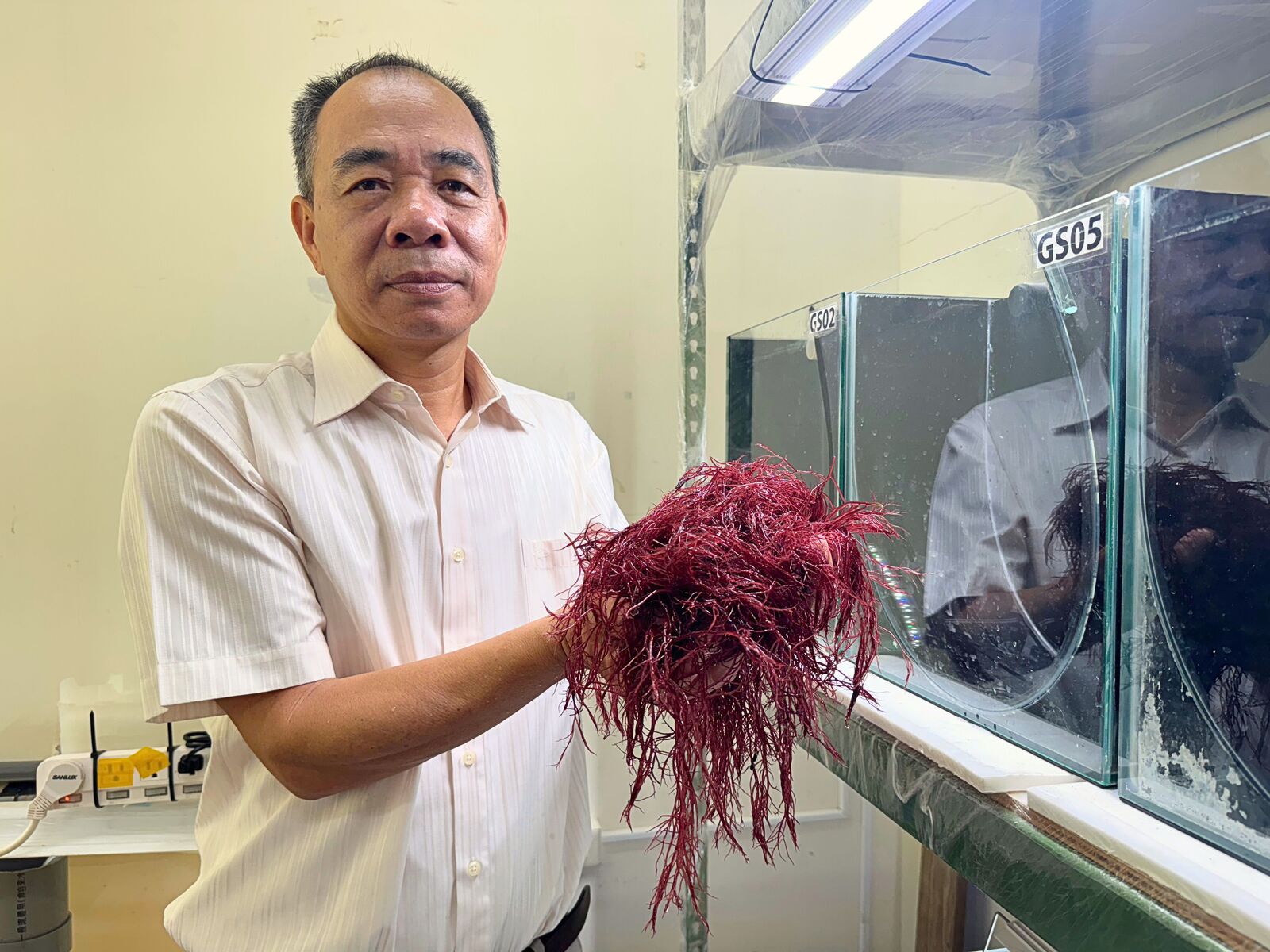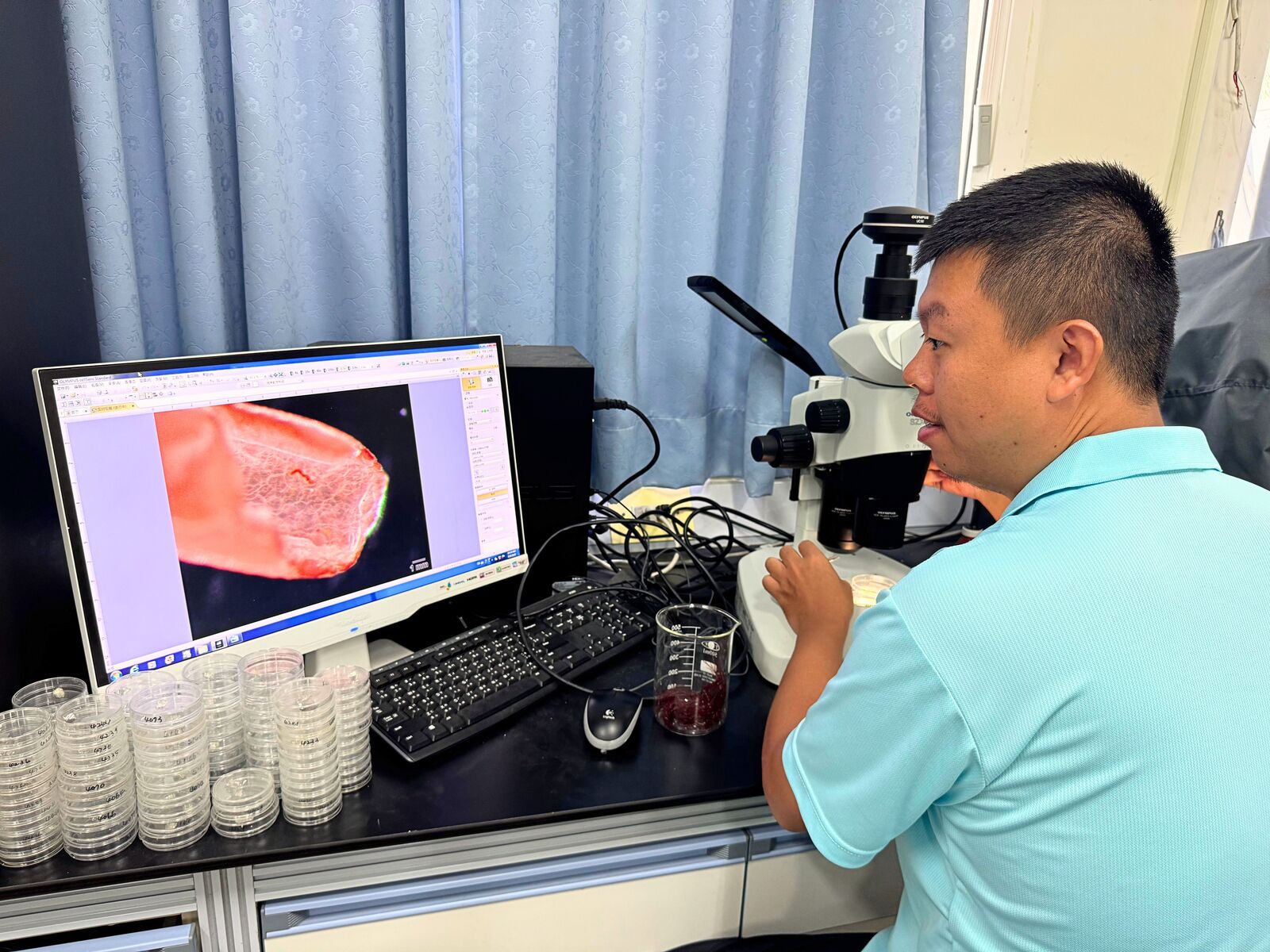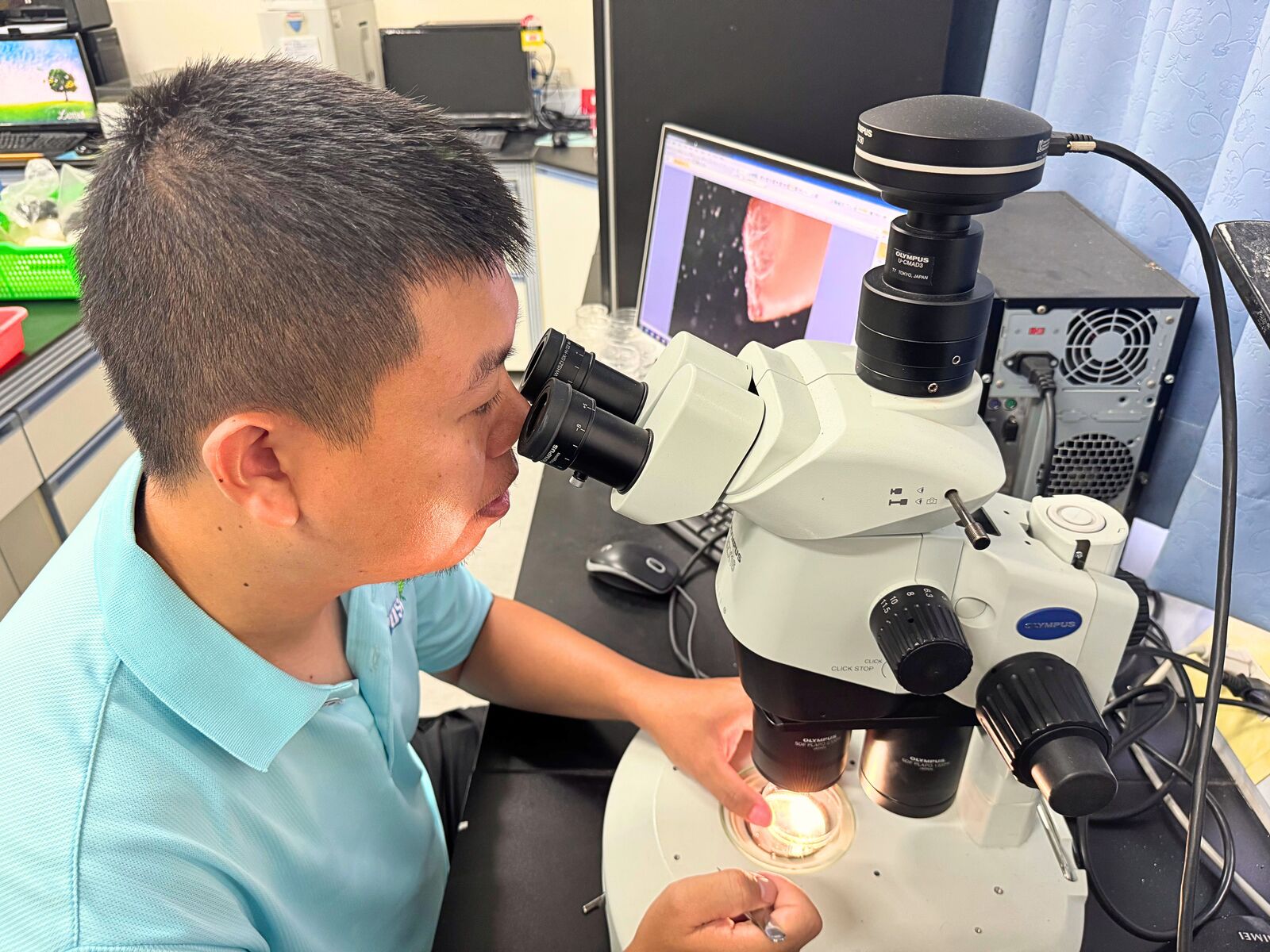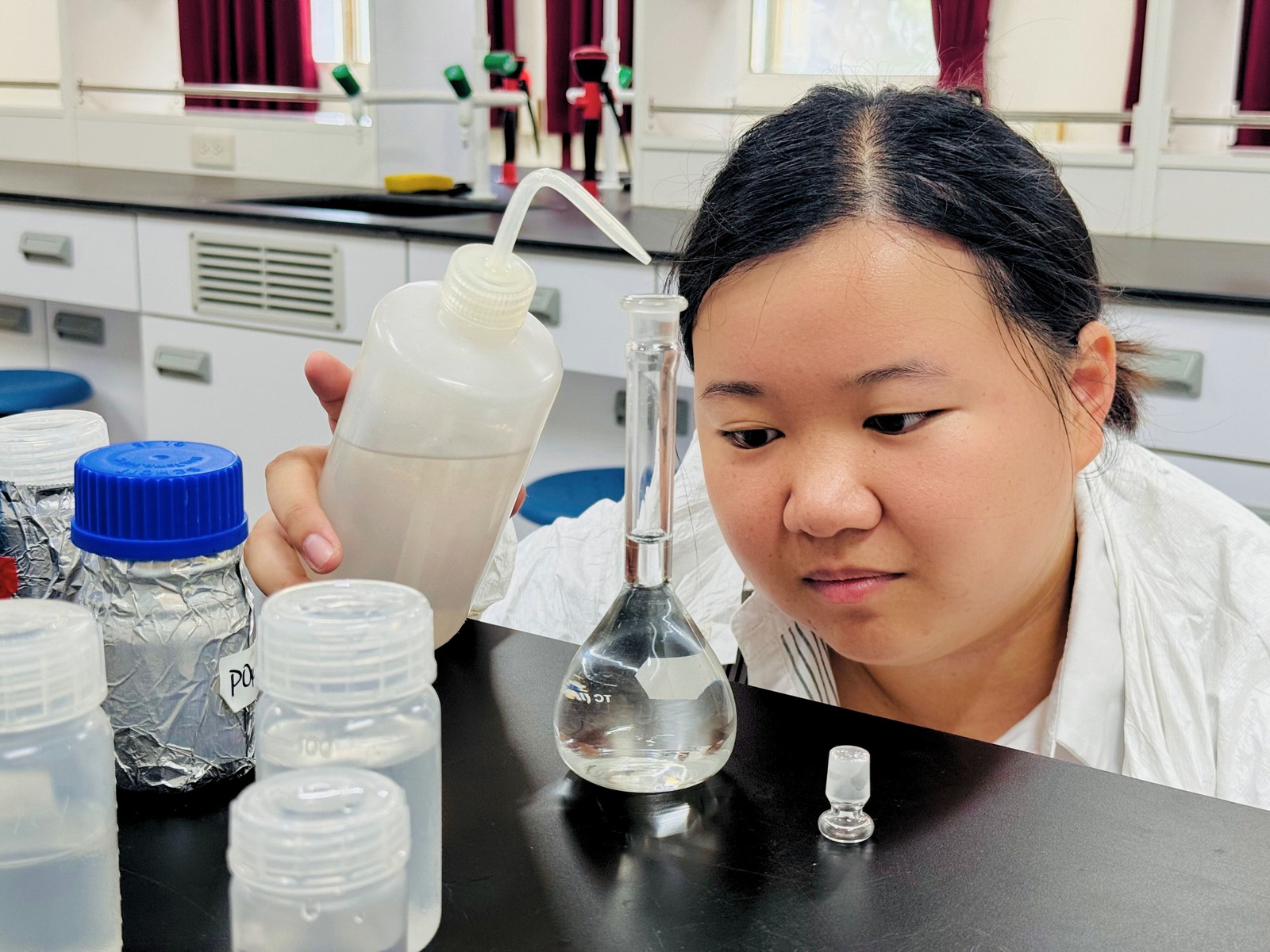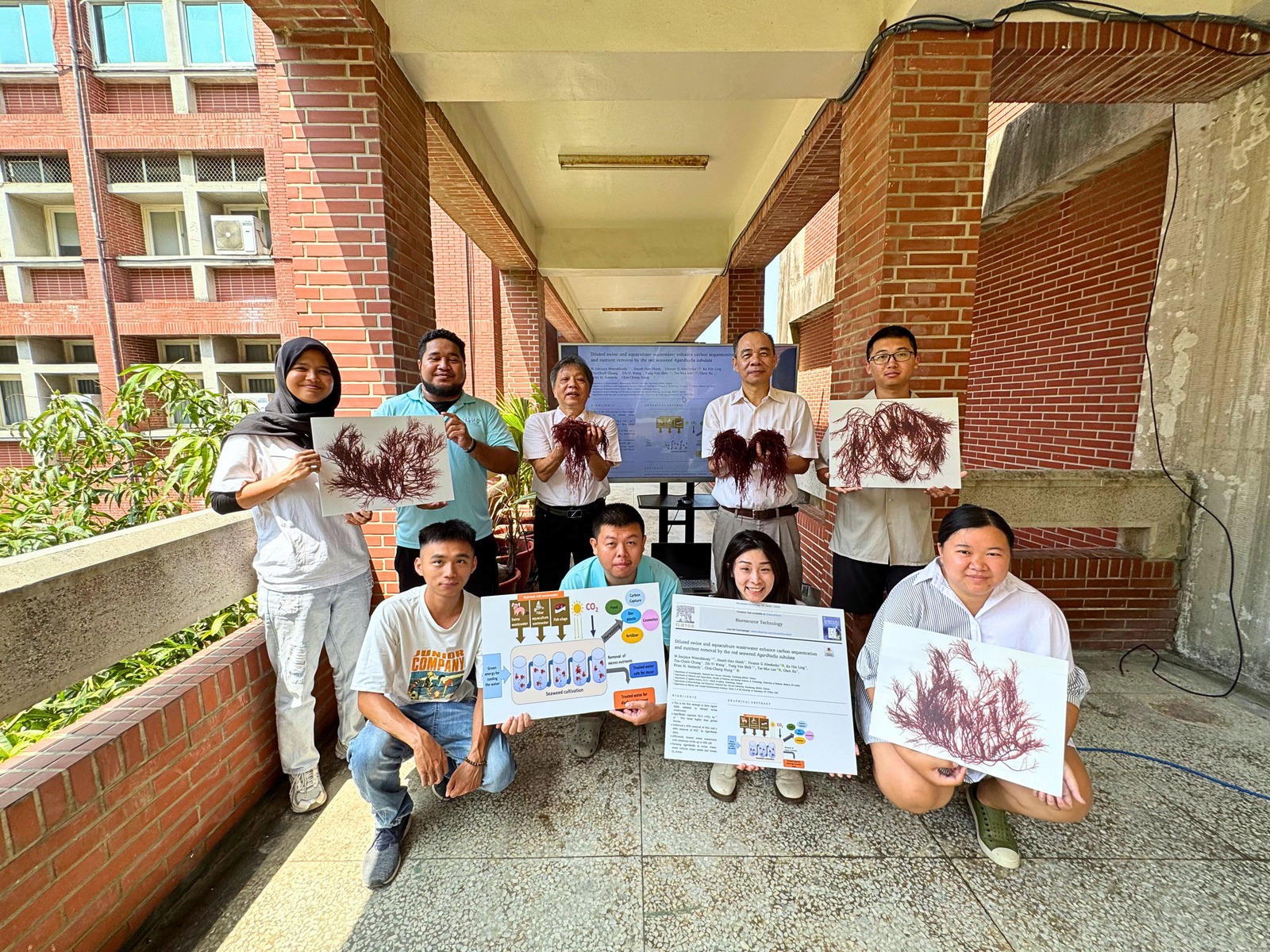NSYSU proposes an innovative carbon capture strategy using red seaweed cultivated in seawater mixed with livestock wastewater
2025-08-04
Distinguished Professor Chin-Chang Hung from the Department of Oceanography at National Sun Yat-sen University (NSYSU) has introduced an innovative marine aquaculture that integrates ocean sustainability and environmental management. The strategy involves cultivating the red seaweed Agardhiella subulata in seawater blended with livestock wastewater. The study demonstrates the seaweed's high tolerance to pollutants and its strong potential for carbon sequestration and water purification, offering a promising solution for swine wastewater treatment, blue carbon development, and climate mitigation. The study was published in the top-tier journal Bioresource Technology.
Professor Hung explained that this strategy was developed to reduce reliance on freshwater and terrestrial resources in aquaculture. With increasing demand for effective wastewater treatment in both aquaculture and livestock industries, mixing seawater with swine effluent to cultivate A. subulata provides a novel, dual-purpose solution, reducing pollution while enhancing carbon capture. This method also aligns with circular economy principles and carbon neutrality goals.
The research team found that A. subulata thrives under salinity conditions of 27–34 ppt and can tolerate ammonia concentrations up to 600 μM, making it suitable for high-pollution environments. In diluted swine wastewater, the A. subulata removed 93% of ammonium and 68% of phosphorus within 24 hours, while also increasing dissolved oxygen levels. These capabilities highlight its role in mitigating eutrophication caused by nutrient-rich discharges.
Regarding carbon capture, A. subulata can sequester up to 52.5 metric tons of CO2 per hectare annually, more than five times the global forest average of approximately 10 tons. Compared to other macroalgae such as Sarcodia suae, Saccharina, Ulva, and Macrocystis, A. subulata exhibits superior pollution tolerance and carbon-fixation potential, making it a strong candidate for blue carbon development.
The study also evaluated different nutrient sources, including effluents from fish ponds, general aquaculture, and swine farms. Among these, A. subulata exhibited the highest growth rate and nitrogen–carbon uptake in swine wastewater, reinforcing its value in environmental management and sustainable resource use.
Professor Hung noted that the feasibility of this system has been demonstrated in a 30-ton seawater tank. The team is currently collaborating with livestock farms and environmental engineering companies in southern Taiwan to launch pilot-scale trials. These will involve installing cultivation tanks and seawater supply systems to assess technical and economic viability. If successfully scaled, this model could enable low-water, low-emission, and high-yield aquaculture with additional potential as a feed ingredient.
The research team includes Dr. W. Sanjaya Weerakkody, postdoctoral researcher Hsueh-Han Hsieh, doctoral student Vicente G Abedneko, master's students Ka Hin Ling and Tzu-Chieh Chung from NSYSU's Department of Oceanography; Distinguished Professor Tse-Min Lee from NSYSU's Department of Biotechnology and Resources; Associate Professor Yung-Yen Shih and student Zih-Yi Wang from the Department of Applied Science at R.O.C. Naval Academy; and Professor Peter H. Santschi and Associate Researcher Chen Xu from the Department of Marine and Coastal Environmental Sciences at Texas A&M University. This research not only supports Taiwan's vision for marine carbon sinks and regenerative marine resources but also provides actionable insights for advancing low-carbon aquaculture and emissions reduction in line with sustainability.
Journal link: https://www.sciencedirect.com/science/article/pii/S0960852425002937
